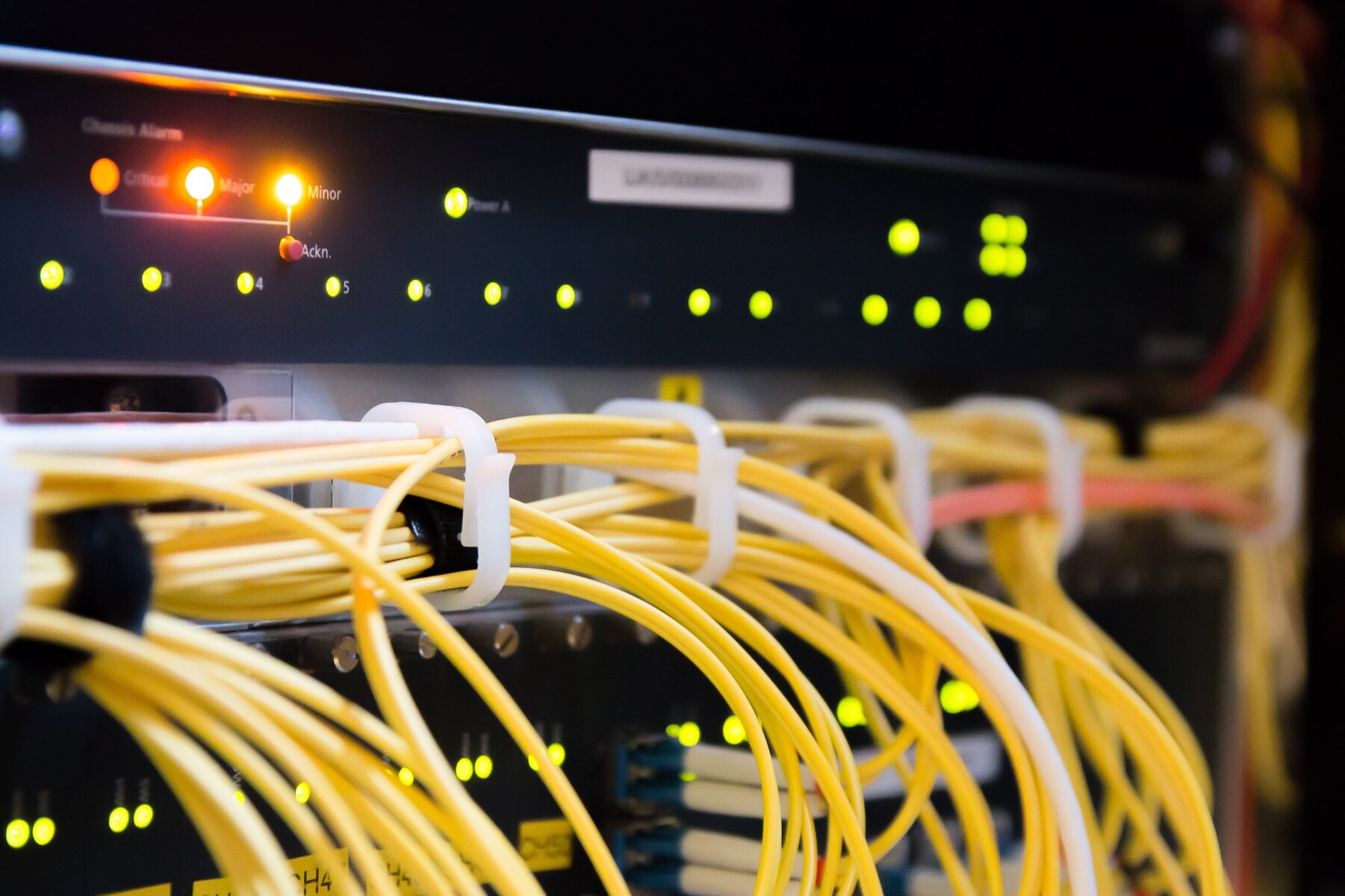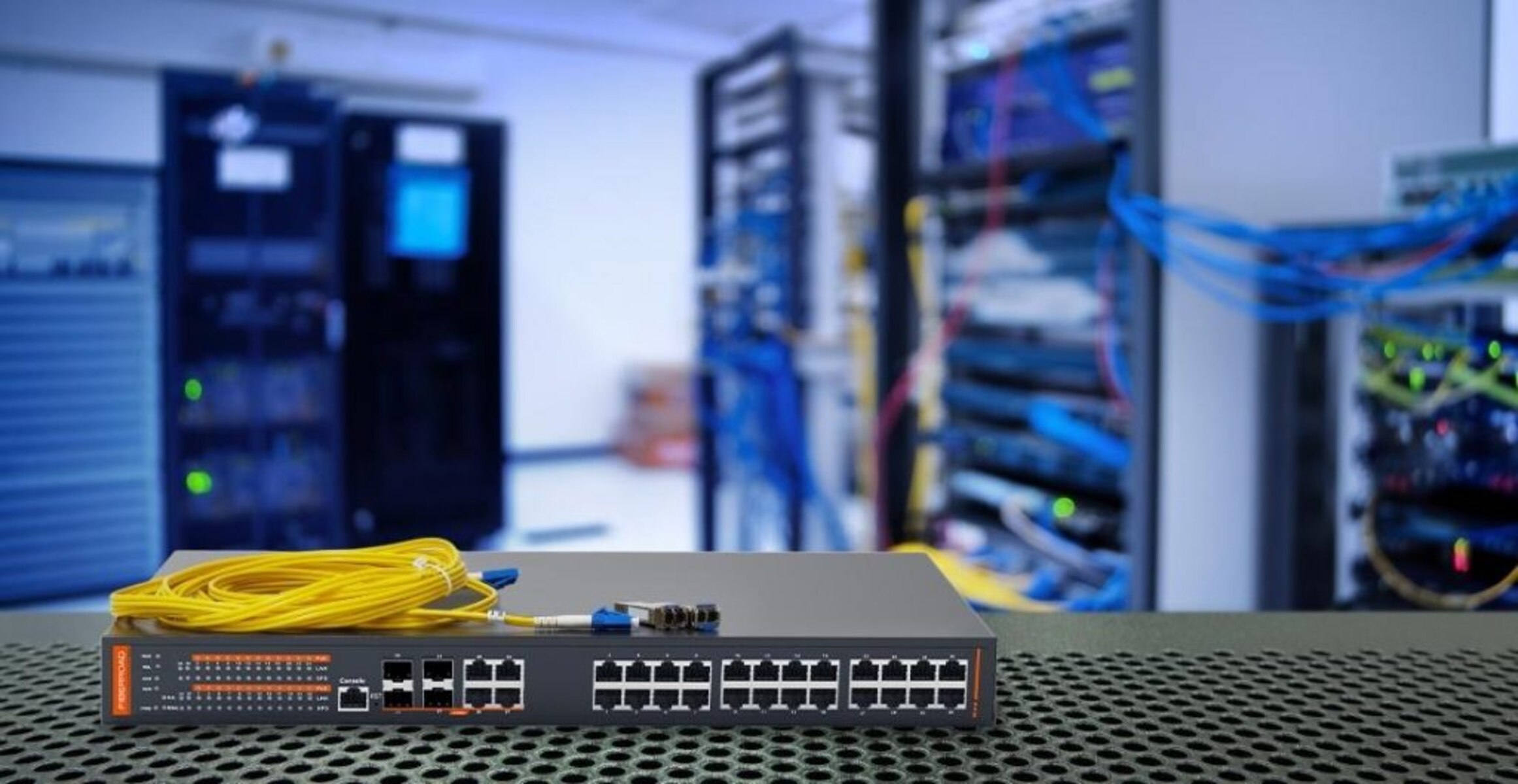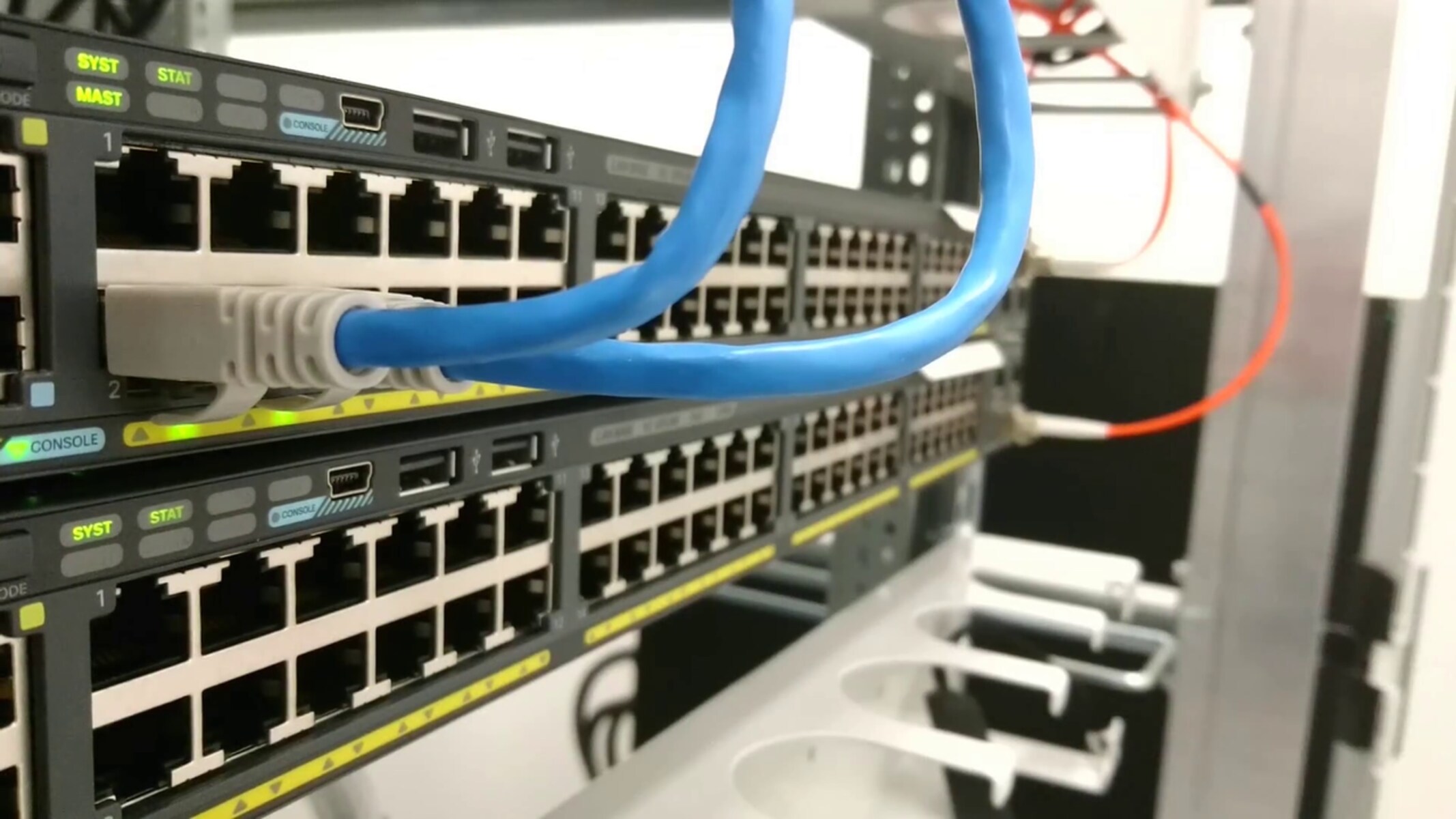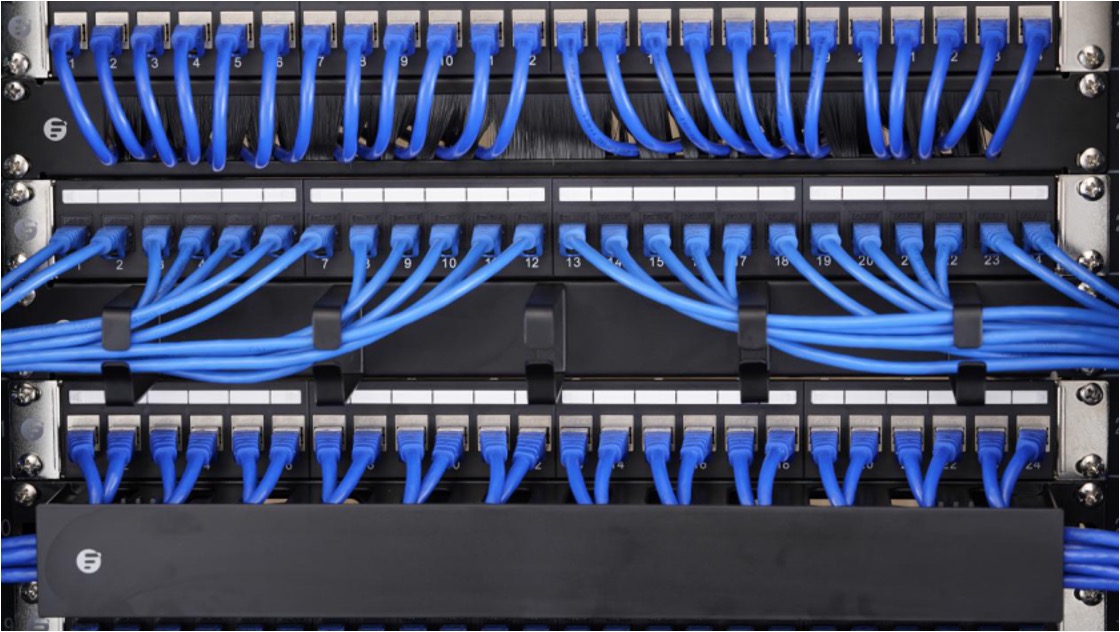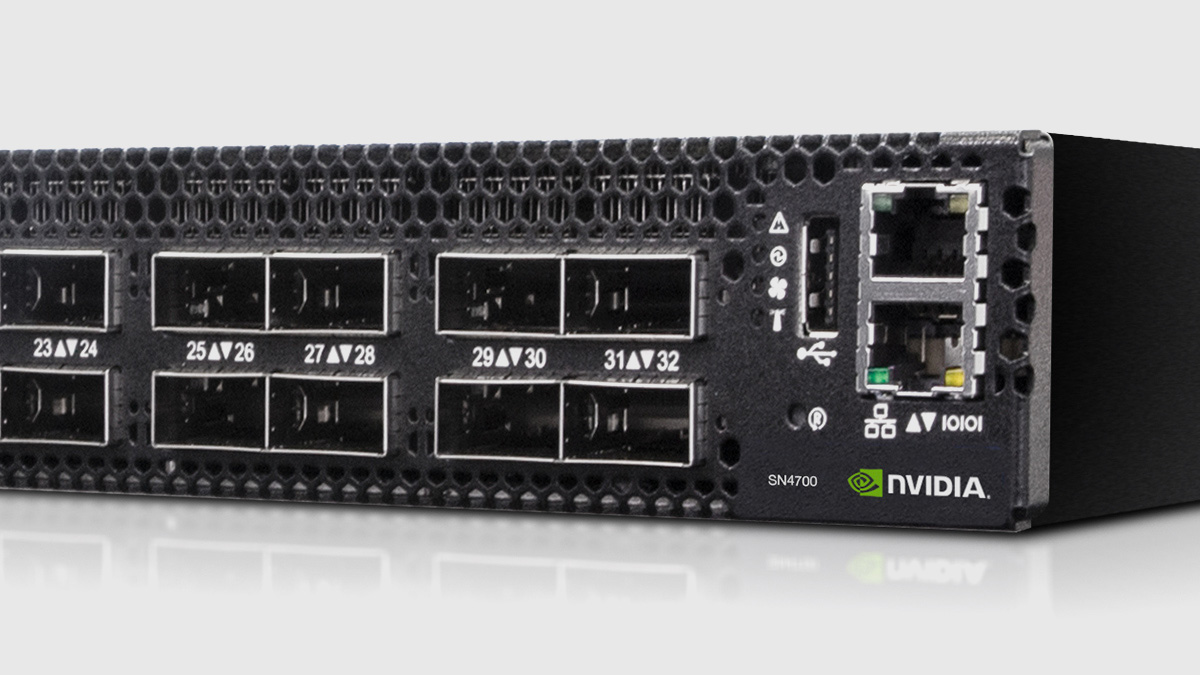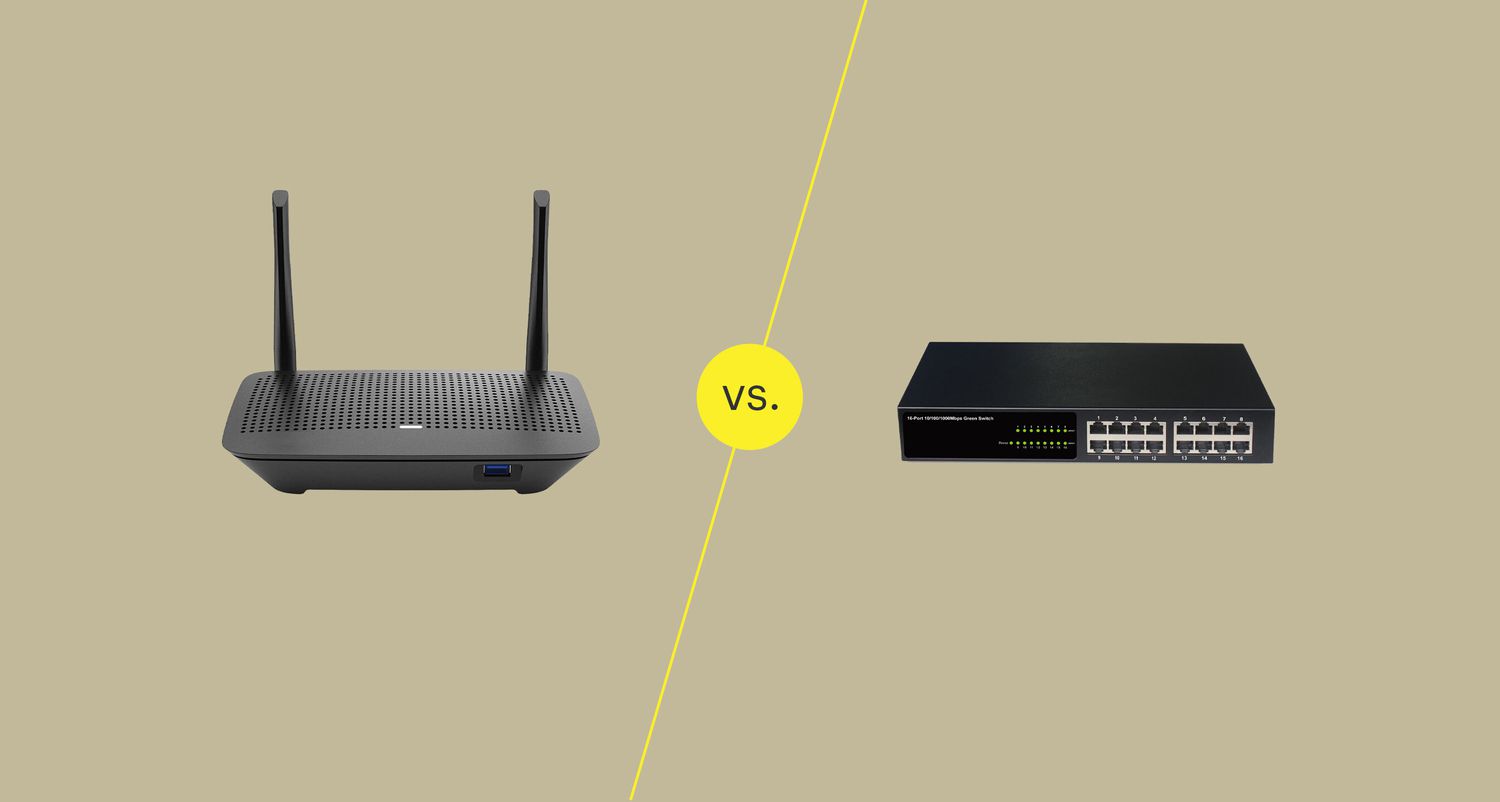Introduction
Network switches are crucial components of modern computer networks. They play a pivotal role in ensuring that data is efficiently and securely transmitted between devices within a network. Whether it's a small office network or a large enterprise setup, the proper management of network switches is essential for maintaining a smooth and reliable network infrastructure.
In this comprehensive guide, we will delve into the intricacies of managing a network switch. From understanding the fundamental principles of network switches to configuring advanced features such as VLANs, port security, and Quality of Service (QoS), this article will equip you with the knowledge and skills needed to effectively manage these critical networking devices.
As we navigate through the various aspects of network switch management, you will gain insights into the best practices for initial configuration, VLAN setup, port security implementation, QoS optimization, and monitoring and troubleshooting techniques. By the end of this guide, you will have a solid understanding of how to manage a network switch to ensure optimal network performance and security.
So, whether you're an IT professional looking to enhance your networking expertise or a business owner aiming to streamline your network infrastructure, this guide will serve as your roadmap to proficiently managing a network switch. Let's embark on this enlightening journey into the realm of network switch management.
Understanding Network Switches
Network switches are intelligent devices that operate at the data link layer (Layer 2) of the OSI model, facilitating the efficient routing of data within a local area network (LAN). Unlike hubs, which indiscriminately broadcast data to all connected devices, switches use MAC addresses to intelligently forward data only to the intended recipients, thereby minimizing network congestion and optimizing bandwidth utilization.
These switches come in various configurations, including unmanaged, managed, and layer 3 switches, each catering to different network requirements. Unmanaged switches are plug-and-play devices with no user configuration options, making them suitable for small, straightforward networks. Managed switches, on the other hand, offer advanced configuration capabilities, allowing administrators to exert granular control over network traffic, security, and performance. Layer 3 switches possess routing capabilities, enabling them to make forwarding decisions based on IP addresses, making them suitable for larger, more complex networks.
Understanding the anatomy of a network switch is crucial for effective management. Switches consist of multiple ports, each serving as a connection point for network devices. These ports can be categorized into access ports and trunk ports, with the former connecting end-user devices such as computers and printers, and the latter facilitating inter-switch connections to carry traffic for multiple VLANs.
Moreover, comprehending the concept of switch forwarding tables, which store MAC addresses and associated port information, is essential for grasping how switches efficiently direct data to its intended destinations. By dynamically populating and updating these tables through the process of MAC address learning, switches ensure accurate and swift data transmission within the network.
As we delve deeper into the management of network switches, it is imperative to have a solid foundation in understanding the core principles and functionalities of these indispensable networking devices. Armed with this knowledge, you will be well-prepared to navigate the intricacies of configuring and optimizing network switches to meet the specific requirements of your network infrastructure.
Initial Configuration
When embarking on the management of a network switch, the initial configuration phase sets the stage for its optimal performance and security. This process involves accessing the switch’s management interface, typically through a web-based GUI or a command-line interface (CLI), to configure essential settings and parameters.
Upon accessing the switch’s management interface, the first step is to set a strong and unique administrative password to prevent unauthorized access. This foundational security measure ensures that only authorized personnel can make changes to the switch’s configuration, safeguarding the network against potential security breaches.
Subsequently, configuring the management IP address of the switch is crucial for enabling remote access and management. Assigning a static IP address to the switch simplifies network administration by providing a consistent point of access, allowing administrators to remotely monitor and manage the switch’s settings and performance.
Furthermore, configuring the switch’s hostname, domain name, and system clock settings contributes to the overall manageability and organization of the network infrastructure. Assigning a meaningful hostname and domain name facilitates easy identification and categorization of network devices, while synchronizing the system clock with a reliable time source ensures accurate logging and time-based operations within the network.
As part of the initial configuration, setting up management protocols such as SNMP (Simple Network Management Protocol) and SSH (Secure Shell) enhances the switch’s monitoring and security capabilities. SNMP enables centralized monitoring of the switch’s performance and status, while SSH provides secure remote access for configuration and management tasks, safeguarding sensitive data during transmission.
By meticulously executing the initial configuration steps, network administrators establish a solid foundation for managing the switch’s operations and ensuring its seamless integration into the network infrastructure. This proactive approach to initial configuration lays the groundwork for subsequent configuration tasks, such as VLAN setup, port security implementation, and Quality of Service (QoS) optimization, enabling the switch to fulfill its role effectively and securely within the network ecosystem.
VLAN Configuration
Virtual Local Area Networks (VLANs) are a fundamental aspect of network segmentation and management, allowing administrators to logically partition a single physical switch into multiple virtual switches. This segmentation provides numerous benefits, including improved network performance, enhanced security, and simplified administration.
When configuring VLANs on a network switch, the first step is to plan and design the VLAN topology based on the network’s requirements and organizational structure. This involves identifying the different departments, functions, or security zones within the network and determining the VLAN assignments for each segment. By strategically grouping devices into VLANs, administrators can control broadcast domains, manage network traffic, and enforce security policies more effectively.
Once the VLAN design is established, the next step is to configure the VLANs on the switch. This typically involves accessing the switch’s management interface and creating the VLAN interfaces, assigning unique VLAN IDs, and defining the associated ports for each VLAN. Administrators can designate specific switch ports as access ports for individual VLANs or as trunk ports to carry traffic for multiple VLANs, facilitating seamless communication between devices within the same VLAN and across different VLANs.
Implementing VLANs also enables the enforcement of security policies and access controls within the network. By utilizing features such as VLAN access control lists (VACLs) and VLAN-based port security, administrators can restrict the flow of traffic between VLANs, mitigate unauthorized access attempts, and fortify the network against potential security threats.
Furthermore, VLANs play a pivotal role in optimizing network performance by isolating broadcast domains and segmenting traffic based on specific criteria. This segmentation enhances network efficiency, reduces broadcast traffic, and facilitates the prioritization of critical data, contributing to a more robust and responsive network infrastructure.
Effective VLAN configuration is instrumental in streamlining network operations, enhancing security, and optimizing resource utilization within the network environment. By strategically implementing VLANs and adhering to best practices in VLAN management, administrators can orchestrate a well-organized and secure network architecture that aligns with the evolving needs of the organization.
Port Security
Port security is a critical aspect of network switch management that focuses on fortifying the integrity and confidentiality of network connections at the port level. By implementing port security measures, administrators can mitigate security risks, prevent unauthorized access, and enforce control over connected devices within the network infrastructure.
One of the fundamental mechanisms in port security is the enforcement of MAC address-based restrictions. Administrators can configure the switch to allow only specific MAC addresses to access designated switch ports, effectively limiting connectivity to authorized devices. This measure prevents unauthorized devices from gaining network access, bolstering the overall security posture of the network.
Additionally, the implementation of port security features such as sticky MAC addresses enables the switch to dynamically learn and store the MAC addresses of connected devices. By associating these learned MAC addresses with the respective switch ports, administrators can ensure that only the authorized devices are permitted to connect to the network, reducing the risk of unauthorized intrusions.
Another essential aspect of port security involves the detection and prevention of security breaches, such as MAC address spoofing and unauthorized port access attempts. Switches equipped with features like port security violation modes and logging capabilities can promptly respond to security violations by disabling the offending ports, triggering alerts, and logging relevant security events for further analysis and remediation.
Furthermore, the integration of IEEE 802.1X authentication protocols enables administrators to enforce stringent access controls at the port level, requiring connected devices to undergo authentication before being granted network access. This robust authentication mechanism enhances network security by validating the identity of connected devices and enforcing compliance with security policies before allowing network connectivity.
By diligently implementing port security measures, administrators can safeguard the network against unauthorized access, mitigate security threats, and maintain a secure and compliant network environment. These proactive security measures contribute to the overall resilience and integrity of the network infrastructure, ensuring that only authorized and trusted devices can interact within the network ecosystem.
Quality of Service (QoS) Configuration
Quality of Service (QoS) configuration on network switches is paramount for prioritizing and managing network traffic to ensure optimal performance for critical applications and services. By implementing QoS policies, administrators can effectively allocate network resources, minimize latency, and enhance the overall user experience, particularly in environments where bandwidth-intensive applications coexist with latency-sensitive services.
One of the key components of QoS configuration is the classification of network traffic into different traffic classes based on specific criteria such as application type, source/destination IP addresses, or Layer 4 port numbers. This classification enables administrators to differentiate between various types of traffic and apply QoS policies tailored to the unique requirements of each traffic class.
Once traffic classification is established, administrators can proceed to configure QoS mechanisms such as traffic prioritization, traffic shaping, and bandwidth allocation. Prioritizing critical traffic ensures that essential applications and services receive preferential treatment in terms of network resource allocation, guaranteeing consistent performance and responsiveness even during periods of network congestion.
Furthermore, the implementation of traffic shaping techniques allows administrators to regulate the flow of network traffic, preventing bursts of data from overwhelming network resources and causing degradation in service quality. By shaping traffic according to predefined parameters, administrators can maintain a more predictable and efficient utilization of network bandwidth.
Moreover, bandwidth allocation through QoS configuration enables administrators to allocate dedicated bandwidth quotas to specific types of traffic, ensuring that mission-critical applications and services have access to the necessary network resources without contention from non-essential traffic. This proactive allocation of bandwidth contributes to a more equitable distribution of network resources and minimizes the impact of bandwidth-intensive activities on other network services.
Additionally, QoS configuration encompasses the deployment of congestion management techniques to regulate network traffic during periods of congestion. By employing mechanisms such as queuing algorithms and congestion avoidance strategies, administrators can mitigate packet loss, reduce latency, and maintain consistent service levels for critical applications, even under challenging network conditions.
By skillfully configuring QoS policies on network switches, administrators can orchestrate a responsive and efficient network environment that prioritizes critical applications and services, optimizes resource utilization, and delivers a superior user experience. These QoS measures play a pivotal role in ensuring that the network can adeptly accommodate diverse traffic demands while upholding the performance and reliability standards expected by users and stakeholders.
Monitoring and Troubleshooting
Effective monitoring and troubleshooting are indispensable facets of network switch management, empowering administrators to proactively oversee network performance, identify potential issues, and swiftly address operational challenges to maintain a robust and reliable network infrastructure.
Monitoring the switch’s operational status and performance metrics is essential for gaining insights into network utilization, traffic patterns, and device connectivity. By leveraging monitoring tools and features, administrators can track key performance indicators such as bandwidth utilization, packet loss, error rates, and port statuses, enabling them to assess the overall health of the network and detect anomalies or performance bottlenecks.
Furthermore, the implementation of SNMP (Simple Network Management Protocol) facilitates centralized monitoring of network switches, allowing administrators to retrieve valuable data and receive real-time alerts regarding critical events or performance deviations. SNMP-based monitoring solutions enable administrators to conduct proactive network analysis, anticipate potential issues, and take preemptive measures to optimize network performance and stability.
In the event of network anomalies or operational discrepancies, troubleshooting becomes paramount in swiftly identifying and resolving underlying issues. Administrators can employ diagnostic tools and techniques to isolate network problems, conduct packet captures for in-depth analysis, and utilize built-in troubleshooting utilities provided by the switch’s operating system to diagnose and rectify connectivity issues, performance degradation, or configuration errors.
Additionally, the utilization of logging and event management features enables administrators to capture and analyze network events, security incidents, and operational activities, facilitating comprehensive auditing and post-incident analysis. By maintaining detailed logs of network events, administrators can trace the sequence of events leading up to issues, validate compliance with security policies, and gain valuable insights for continuous improvement of network operations.
Moreover, the integration of traffic monitoring and analysis tools empowers administrators to scrutinize network traffic patterns, identify potential security threats, and detect abnormal behavior that may indicate network intrusions or unauthorized activities. These monitoring capabilities play a pivotal role in maintaining network security and integrity while enabling administrators to respond promptly to emerging security challenges.
By embracing a proactive approach to monitoring and troubleshooting, administrators can uphold the performance, reliability, and security of the network infrastructure. The adept utilization of monitoring tools, diagnostic techniques, and event management practices equips administrators with the means to swiftly identify, address, and mitigate network issues, ensuring the seamless operation and resilience of the network ecosystem.
Conclusion
Managing a network switch encompasses a multifaceted array of tasks and responsibilities, each crucial to the seamless operation, security, and performance of the network infrastructure. From the foundational aspects of initial configuration to the intricacies of VLAN setup, port security, Quality of Service (QoS) configuration, and the vigilance of monitoring and troubleshooting, effective switch management is a dynamic and continuous endeavor that demands expertise, diligence, and adaptability.
By comprehensively understanding the principles and functionalities of network switches, administrators can adeptly navigate the complexities of switch management, leveraging advanced features and best practices to optimize network operations and fortify security measures. The strategic implementation of VLANs facilitates network segmentation and traffic management, while robust port security measures safeguard the network against unauthorized access and security breaches.
Furthermore, the meticulous configuration of Quality of Service (QoS) policies empowers administrators to prioritize critical traffic and maintain consistent service levels, ensuring an optimal user experience and resource utilization. The proactive monitoring and troubleshooting of network switches enable administrators to vigilantly oversee network performance, swiftly identify and address operational challenges, and fortify the network against potential issues and security threats.
As technology continues to evolve and network demands grow increasingly complex, the role of network switch management remains pivotal in orchestrating resilient, secure, and high-performing network infrastructures. By staying abreast of emerging technologies, adhering to industry best practices, and embracing a proactive and adaptive approach to network switch management, administrators can effectively meet the evolving demands of modern networks while upholding the integrity, security, and efficiency of the network ecosystem.
In conclusion, proficiently managing a network switch is a dynamic and multifaceted undertaking that demands a comprehensive understanding of networking principles, an adept utilization of advanced features, and a proactive approach to network administration. By mastering the art of switch management, administrators can cultivate resilient and responsive network infrastructures that cater to the diverse needs and challenges of the digital landscape.







